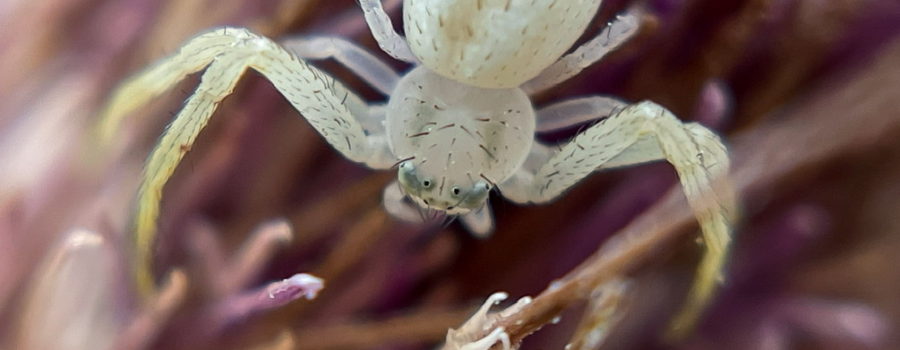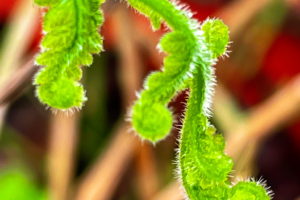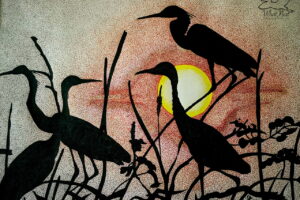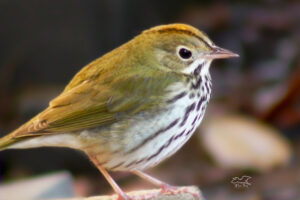The Northern Crab Spider is Amazing and Really Cool

Anyone who knows me or has read very many of these stopretty quickly comes to realize that I love spiders. Yes, I’m that girl who catches them inside my house and office and puts them back outside rather than stomping them. I’m not quite as crazy as some friends of mine in Australia who let them live inside their home, but I’m close. Back in the spring we had thistles blooming all over the place. They tend to stand out for several reasons (but that’s for a different story for another day), so I decided to do a photo essay on one flower from bud to seeds. Every few days I would take the next shot in the series. One day towards the end of the series I went out to get my photos and instead of just the passing flower, I found a tiny white spider. It was one of the smallest I’ve ever seen, and it definitely required the macro lens to get good shots. Fortunately, it was a very cooperative subject, and even gave me some cool shots of it wrestling with a weevil at one point.

After getting some photos the next big problem became identifying it. It was definitely a crab spider. That was easy enough to tell by the long front two legs on each side and the way it moved sideways as well as forwards and backwards (especially noticeable during the weevil event). The problem with crab spiders is that within limits they can change color. They don’t weave webs to catch prey like most spiders. Instead they hide in the flowers that their prey frequently feed from and jump out and bite them. They can take down a lot of insects that are quite a bit larger than themselves. Their ability to change colors helps them to camouflage themselves on the plants where they live. That not only helps them catch their prey, but it also helps them hide from things that will prey on them.
Crab spiders change their colors in two ways. They can change somewhat to match the flower or plant they are on, but the major thing that determines their color is what they have been eating. So if much of their prey has been yellow (ie bees, butterflies, etc) they tend to become yellowish. Similarly, if they are eating a lot of reddish colored insects they will have a pink hue, and dark insects will cause a brownish color. Pretty cool for the spider, but not so good for someone trying to identify them!

The other issue with trying to identify this spider is that there are many, many crab spiders and lots of their ranges, sizes, and even eye configurations overlap. At one point I was reading a very in depth scientific paper about macroscopic eye configurations and their visibility at varying photo angles! Agggh! I researched this spider on and off for several weeks, and even gave up a couple times until curiosity got the better of me. One afternoon last week I was reading an article about the goldenrod crab spider (I was almost sure that I had finally identified the spider!) and at one point the article said that it was often confused with the northern crab spider except that the northern crab spider is covered in short, bristly hairs! Yes! That sounded like my spider! I clicked on the link, and sure enough, my spider was identified at last! If it hadn’t been for a decent macro lens, the hairs would have definitely been invisible, so I can see how the two spiders are easily mistaken for one another.

Wherever you live you probably have crab spiders and unless you’re looking for them you will never notice them. I would never have seen this one if I hadn’t been photographing that flower. I’m glad that I did see it. It was a lot of fun to watch and take pictures of it, especially when it was grappling with the weevil (the weevil managed to escape, by the way. I’m not sure if the spider wasn’t really hungry or just didn’t want weevil for dinner). So if you have a macro lens and flowering plants around, you can probably find some crab spiders, too. Happy hunting!






Recent Comments